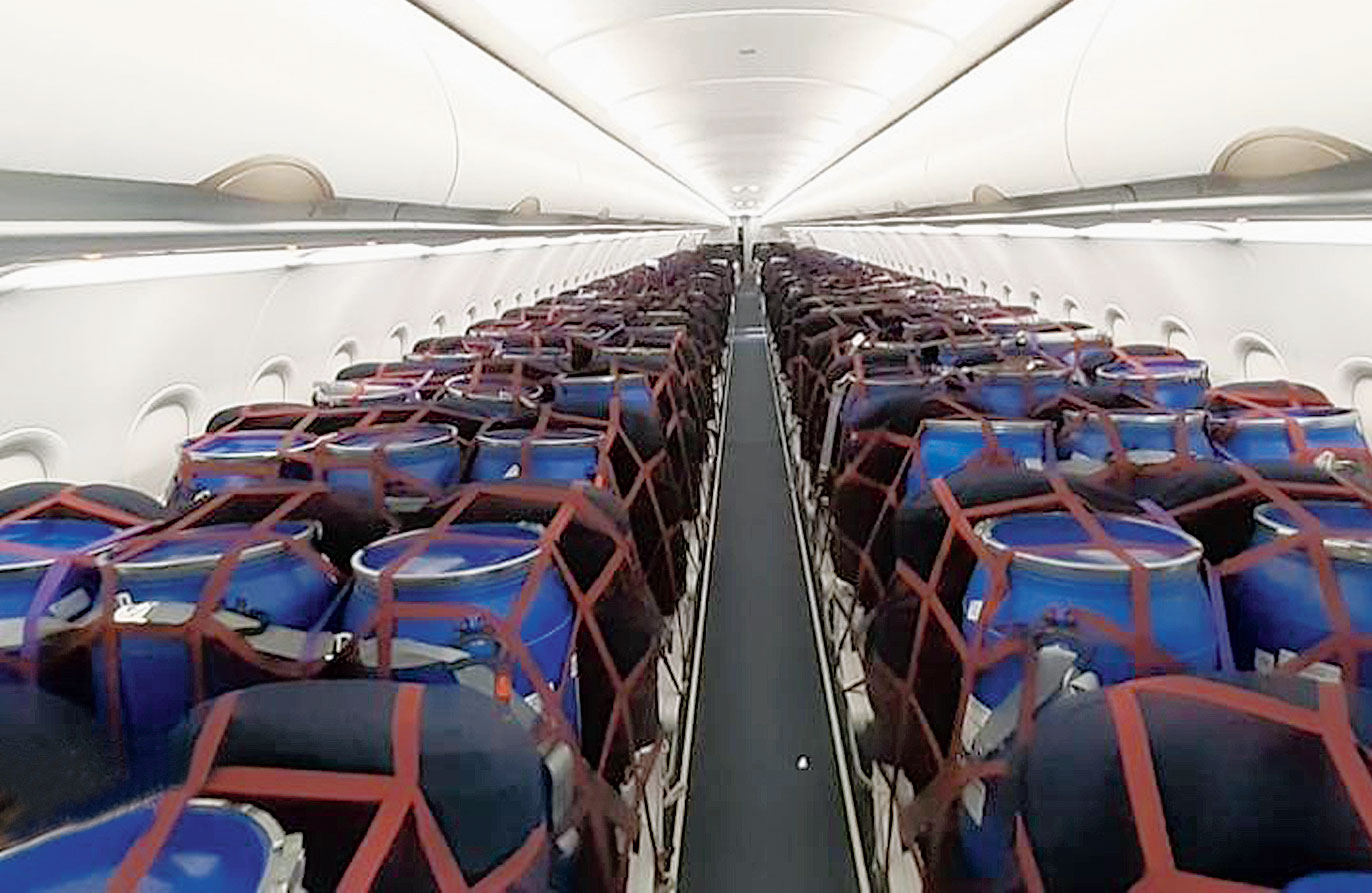An AirAsia flight from Calcutta took off for Chennai on Thursday night, with pilots and cabin crew and seats almost full. Only, instead of passengers, there were cartons and containers.
This was the airline’s first cargo-on-seat flight, a new model approved by the civil aviation ministry to allow airlines to make up for some of their losses inflicted by the Covid-19 pandemic.
Now, many airlines are converting passenger planes into cargo aircraft on certain routes because there are not enough passengers to make a flight viable.
The Airbus A-320 aircraft of AirAsia, which has 180 seats for passengers, carried eight tonnes of cargo, about half of which was kept on passenger seats and the rest in the belly space, airline officials said. The cargo contained fertilised fish eggs, litchis and mails and parcels.
The boxes were tied to the seats with ropes. The cabin crew, used to serving meals and making announcements, was assigned an unusual duty — to ensure that no box fell off the seat or from any overhead compartment.
Fire-proof seat and arm covers were placed on the normal seats as an added precaution.
“The aircraft was sanitised before Calcutta-bound passengers boarded it at the Chennai airport on Friday,” said an official of AirAsia.
The airline had to take approval of the directorate general of civil aviation for carrying cargo on passenger seats.
Calcutta airport officials said SpiceJet and IndiGo operated similar cargo-on-seat flights from Calcutta on Friday. The SpiceJet flight brought cargo from Chennai and took off with a fresh set of cargo for Surat. The IndiGo flight took off with cargo for Delhi.
The first cargo-on-seat flight was operated by SpiceJet on April 7. The aircraft had carried 11 tonnes of cargo from Delhi to Chennai and onwards to Surat.
Aviation industry sources said that during the Covid-19 lockdown, when passenger flights were stalled, airlines were using some of their grounded aircraft to carry essential cargo.
After lockdown norms were eased and domestic flights resumed from the last week of May, airlines are continuing with the cargo-on-seat scheme because they are not getting enough revenue from passenger flights, said sources.
“A few flights from Calcutta, with a capacity to carry 180 passengers, are having 100 seats filled. Some are even having as low as 10 passengers,” said an official of a private airline. “That is because only people with real necessity are travelling.”
On June 18, 67 flights took off from Calcutta with 4,366 passengers. That means on an average around 65 passengers travelled on each flight out of Calcutta.
Airlines sources said because of low passenger count, some flights have to be cancelled and the passengers are accommodated on other flights.
“But the scheduled return flight against a cancelled one might have many passengers and cancelling that would not be viable. So, cargo is being carried on passenger seats, in addition to what the aircraft’s belly can accommodate, on the onward journey,” an official said.
An IndiGo spokesperson said the airline had operated more than 40 such cargo-on-seat flights out of Calcutta so far in June, 37 of which flew to international destinations.
“Many airlines are operating chartered flights, too, along with cargo-on-seat flights,” said Kaushik Bhattacharya, Calcutta airport’s director.
Airport sources said IndiGo had operated several chartered flights from Doha to Calcutta bringing in stranded Indians. AirAsia recently operated a similar chartered flight from Mumbai to Calcutta and then onwards to Imphal.










